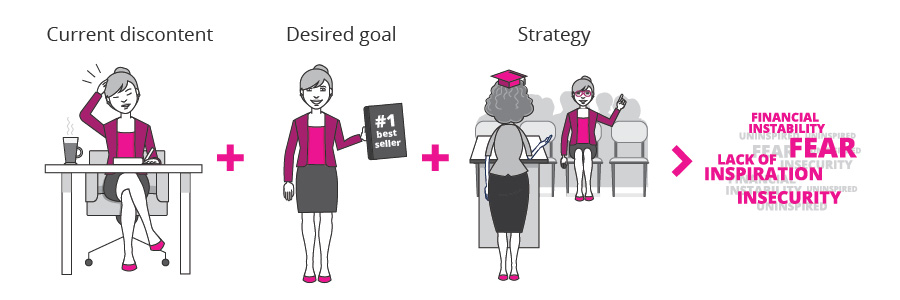Use this formula to achieve your career goals
Most people are unable to stick to their resolutions or achieve their career goals because implementing and managing change is often a difficult process.
Research supports this, suggesting that only 8% of people achieve their New Year’s goals.
This statistic is representative of the general struggle we face on a day-to-day basis to achieve goals and objectives in the workplace. And often, if we don’t meet these objectives, we feel disappointed in ourselves – which in turn impacts our motivation and productivity at work.
But you don’t have to be a part of that 92%.
The secret, according to David Gleicher, lies in a simple, but effective, formula for change that focuses on the behaviour, not the outcome of goal-setting.
![]()
In simple terms, the combination of your current discontent, your desired goal and the strategy needed to achieve that goal must be greater than the resistance (or difficulty) of making that change.
Picture this: You really want to write a number one best seller but factors such as fear and lack of inspiration are stopping you from achieving your dream. However, if your frustration with being uninspired is coupled with a strong and clear goal as well as a helpful course in creative writing, those factors of resistance can be overcome.
So what are these key elements?
Dissatisfaction with your current situation
In order to be motivated to change, you need to identify what the issue with your current situation is.
For example: If you want to change careers, identify the factors in your current situation that are causing discontent. Lack of promotion or recognition from your boss? No annual salary increase? No motivation at work? Make a list of the things you want to change, and why.
Vision of the future
In order to approach goal-setting with confidence and motivation, you need to be aware of what lies ahead. When you know the possibilities and opportunities waiting at the end of that path, you’re a lot more likely to follow it. Your vision for the future also needs to be clear because any sort of uncertainty could make you veer off course.
For example: You need to know exactly what your dream career looks like. Write out your vision. Fill in as many details as you can: which industry it would be; what your role and responsibilities would look like; how much you’d get paid; and what the company culture would be like.
First steps
The third variable is about strategy. It’s not enough to have discontent and a vision for the future. You need a game plan to achieve that vision and have ultimate motivation. Define your quarterly, annual and 5-year goals and priorities, complete with the action you need to take to get there. This career guide offers you a great resource to help set out your vision and strategy in a measurable and achievable way.
For example: If it’s a new career path or job you’re aspiring to, your first steps could look like:
And finally…
The power of this formula is not in the above-mentioned individual variables, but in realising that when you add them all together, in that sequence, they’ll overcome any resistance you may have to making your desired change.
Want more guidance to help you reach your career path priorities?
Have a look through this collection of advice on setting goals.
